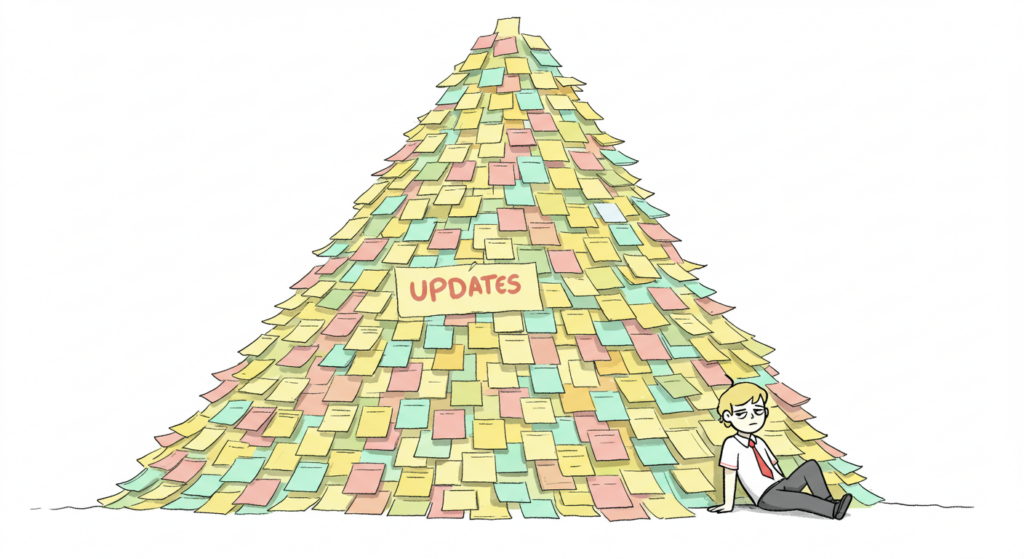Why status updates feel so exhausting
It’s not that status updates aren’t important—they are. But when the process is clunky, repetitive, or overwhelming, it drains your team’s energy faster than an inbox full of “Just checking in…” emails.
Here’s what’s really going on:
- Too many updates: Do we really need to know everything every day?
- No clear purpose: Updates feel like busywork when there’s no obvious value to the team.
- Manual madness: Gathering data, formatting reports, and juggling tools eats up valuable time.
When updates aren’t streamlined, they stop being helpful and start feeling like a chore.

Automation to the rescue (but not like a robot takeover)
Automation can save your team from update fatigue—but only if it’s done right. The goal isn’t to replace people with machines; it’s to let machines handle the boring stuff so people can focus on what really matters.
Here’s how automation makes updates smarter:
- Track without effort: Tools that automatically update progress from your existing workflow (like project management software or code repositories) keep everyone informed without lifting a finger.
- Summarize the essentials: Automated reports pull the key highlights, so you don’t have to dig through the details.
- Keep the nudges minimal: Smart reminders ensure updates happen on time without bombarding your team.
But remember, automation is just a tool. It doesn’t celebrate wins or solve problems—that’s where humans come in.

Bring back the human touch
Here’s the truth: automation makes updates faster, but it’s the human element that makes them meaningful. Teams don’t need another graph; they need context, collaboration, and connection.
Consider this:
- Context adds depth: Automated reports might show a missed deadline, but only a team member can explain why it happened and what’s being done to fix it.
- Collaboration solves problems: Updates aren’t just about sharing progress; they’re an opportunity to align, brainstorm, and support each other.
- Celebration builds morale: No algorithm can replace the energy of a manager saying, “You crushed it this week!”
Balancing technology with personal insights keeps updates relevant and engaging—not just another checkbox on the to-do list.

Rethink your status update strategy
If your updates feel like a slog, it’s time for a reset. Here’s how to design a process that actually works:
- Ask less, get more: Do you really need daily updates? Focus on what’s essential—progress, blockers, and next steps.
- Automate the boring parts: Use tools to track and summarize progress, so updates take minutes, not hours.
- Keep it human: Use check-ins for what automation can’t do—context, problem-solving, and celebrating wins.
- Be clear and consistent: Let your team know what’s expected, how often, and why it matters.
Imagine updates that actually work
Imagine an update process where:
- You spend less time writing and more time doing.
- Automated tools keep everyone informed without micromanagement.
- Check-ins feel like collaboration, not an obligation.
It’s not just possible—it’s necessary for modern teams that want to stay fast, aligned, and motivated.

Updates don’t have to be exhausting
The best updates are like good coffee—energizing, not draining. With the right balance of automation and human interaction, your team can stay connected, informed, and focused on what matters.
Let the tools handle the grunt work, keep the conversations meaningful, and watch your team transform from status fatigue to unstoppable.

